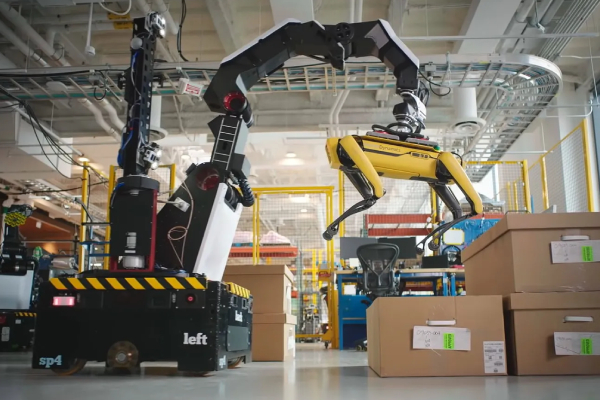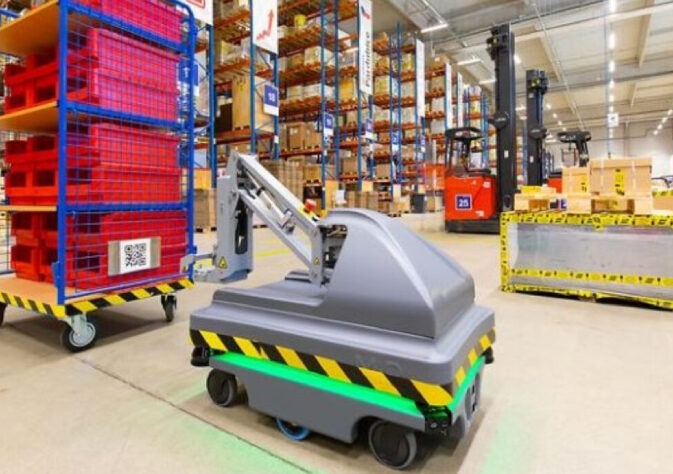The role of robotics in logistics
The use of robots in professional settings varies from hospitals to warehouses to the military. Robotics is the technology of the future indeed, given their role in boosting productivity in various professional settings.
The logistics industry has already seen the rise of robots, and their expected growth will enable the technology to flourish in the general public. As one of India’s leading IT logistics companies , Avon Solutions and Logistics has been at the helm of embracing this robotic revolution. By reducing human error and increasing delivery speed, robotic logistics can improve safety and increase customer satisfaction. For information on robotics logistics, read our comprehensive article here.
What Is Robotics Logistics?
George Charles Devol invented the Unimate, the first industrial robot, in 1954, and it is still in use today. In 1961, General Motors installed the Unimate for spot welding and die-casting handling in their car factories.
Today, robots are helping doctors during surgeries, collaborating with nurses in hospitals, demining dangerous landmines, and aiding in the recovery from natural disasters. They’re also used to help us with a wide range of tasks. Logistics robots are a viable option for companies looking to combat the shortage of skilled labour in their respective industries. Depending on their intended use, robots can be human-like or non-human.
Robots are generally thought to be unintelligent, blind, and stationary. On the other hand, the world of logistics is far more dynamic and complex. To be effective in the field of logistics, robots must have a combination of “Brains, Feet, Hands, and Eyes.”
Robots must see, move around, and respond to their surroundings in the logistics industry. Modern logistics robots are capable of all these. The use of robots in warehouses is the best example of robotics logistics.
The growth of e-commerce and a scarcity of skilled workers have increased robotic logistics’ popularity in recent years. Robotics simplifies the difficult task of transporting goods across long distances and offers significantly more uptime when compared to manual labour.
What Kind Of Robots Can Be Used In Logistics?
Robots are currently used in warehouses and can operate on the ground or air. They are, however, still costly to operate and have security concerns. It is observed that courier partners that use robotic logistics can save businesses up to 70% on warehouse labour costs, allowing them to operate at a lower cost at all hours of the day and night. Autonomous mobile robots in the warehouse are examples of robotic logistics in the supply chain. Unmanned Aerial vehicles are also used In the supply chain extensively. Here are a few more examples of how robots are employed in logistics.
- Drones are warehouse management robots with the ability to fly and carry a limited amount of weight. They can also be used to get to hard-to-reach places. Unloading, lifting, storing, and packing pallets are all done with robots and drones, allowing greater safety and efficiency.
- Robotic vehicles are small self-driving cars that can navigate a warehouse without needing a driver or remote control.
- Cobots, or collaborative robots, are arms used to pick up products, close and seal boxes, and move packages from one shelf to another. Grippers on a logistics robot move items within a logistics operation.
- Artificial intelligence-enabled robots can assist warehouses in managing inventory more safely and effectively.
- A robot equipped with an RFID system can read thousands of labels in a short period.
The application of robotics to one or more of the processes listed above is called robotic logistics.
Recent Developments Of Robotics In Logistics
In recent years, robotic logistics has gotten a lot of funding and investment, with the latest estimates predicting a whopping billion market by 2022. Robotics has cut logistics costs by 20% to 40% and increased productivity by 25% to 70%, allowing for faster and more precise deliveries. Although logistics robots are still prohibitively expensive, they offer a better return on investment. Robots in logistics would benefit e-commerce industries and jobs for sure.
The following are a few recent developments in robotics logistics.
- The Parcel Robot from DHL can scan all boxes in a container and unload the products based on their sizes. The items are then placed on conveyors transporting them from the container to a sorting centre for further processing.
- The Baxter robot is a collaborative robot that can collaborate with humans in collaborative environments and can be used for co-packing applications like bundle pricing.
- Starship Technologies is working on parcel delivery robots deployed shortly.
- To develop its current robot, Baxter, Rethink Robotics has raised $113 million in capital from venture capitalists. To date, Fetch Robotics has raised $23 million in the capital.

The Future Of Robotics In Logistics Industry
Robotic logistical assistants are becoming more affordable, capable, and reliable than ever before, allowing businesses of all sizes to deploy them. Several robotics companies are now working on mobile piece picking robots that can drive around traditional warehouse shelves and pick items. Robots of the future will recognise objects, track their location, and plan a path to pick them up. Robots would also be used to deliver packages to customers’ doors, assist with internal logistics, and free up human workers to focus on higher-value-added tasks.

